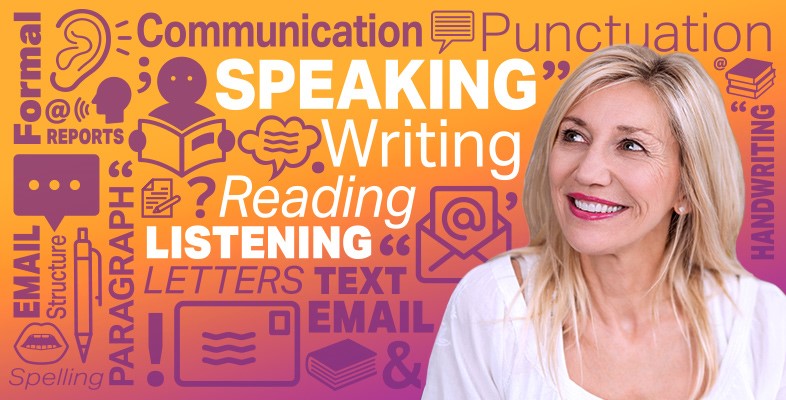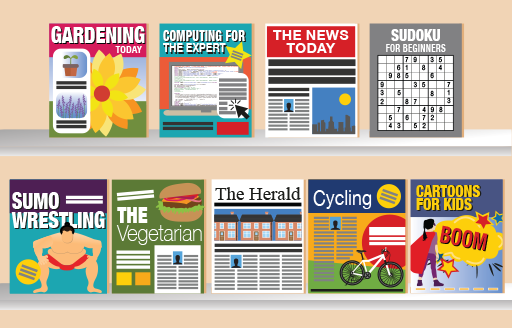2.1 Skimming or skim-reading
Skimming means looking at a whole page quickly, to find out:
- the main topic
- whether you need to read it all or just some important parts of it
- how much time you might need to spend on it.
Skimming helps you to find out information quickly. It helps you to decide if something is going to be useful to you. When you skim, you might look at the title, headings and pictures to get a sense of what it’s about and whether it’s worth looking at it in more detail.
You might skim the information on the packaging of a product to see if it is what you need to buy.
Activity _unit3.2.1 Activity 11 Choose your text
Imagine you are standing in the newsagent’s shop looking at the rack of magazines and newspapers.
Which one would you buy?
Why would you choose that one? What did you do to make that decision?
Discussion
How did you skim the texts to decide which one you would choose? Did you skim the titles to see which one interested you or did you skim the pictures for something that stood out? You would perhaps do things slightly differently if you were looking for something new rather than something based on your interests. If you were choosing something for someone else you might have to be a bit more careful or skim more slowly.
Sometimes you will need to read a longer text, like a book. You may need to look up information in a reference book. You may want to read an article on a website or a large leaflet or booklet.
Reading a whole booklet or book takes up a lot of time. You need to be sure that you are reading the right thing at the beginning.
Activity _unit3.2.2 Activity 12 Choose your book
Imagine you are in a bookshop or a library and are choosing a book to read. Books don’t have as many clues to help you choose which to read as newspapers and magazines. How would you pick a book to read?
Discussion
You could look at the description of the book on the back cover.
The picture on the front cover may look interesting.
You may have read another book by the same person.
Perhaps you have seen the film of the book.
Activity _unit3.2.3 Activity 13 Practise skimming
Find a book that is close to you. It does not matter what topic or style. Quickly read the front and back covers and the inside of the covers. How much do you now know about the book?
Discussion
From a quick skim, you probably now know:
- what it’s called
- who wrote it
- what it’s about
- who published it
- how much it costs
- if it has had good reviews
- whether or not you would read it.
It is amazing how much information you can pick up in a few seconds of skimming.

